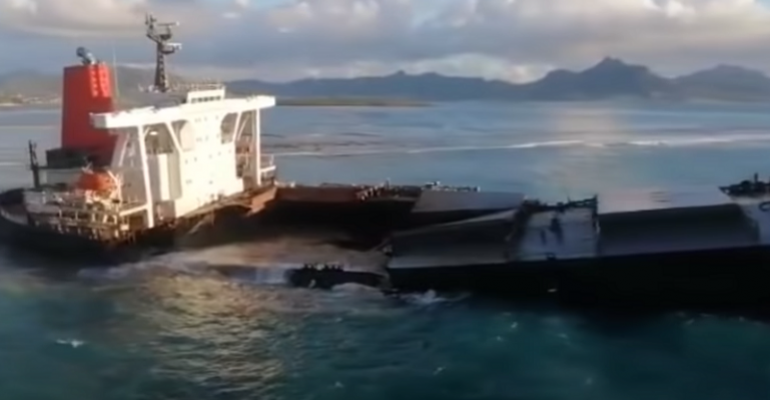The Panamanian-flagged vessel was in ballast en route from China to Brazil when she ran aground on a reef in Mauritius, close to Pointe d’Esny and only a short distance from the shore on 25 July. The location is about three kilometres from the island’s airport on the south east coast.
Nearby, the Ile aux Aigrettes is one of the Indian Ocean’s most important nature reserves and conservation sites. It was first protected in 1965 and has been managed by the non-governmental organisation, Mauritius Wildlife Foundation, since 1985. It is a textbook example of biodiversity in action and the preservation of endangered species in the natural environment. No surprise, then, that the grounding and subsequent break-up of the bulk carrier has received extensive global coverage.
Shipping market sources reveal a deepening unease over both the reasons for the grounding, the clear navigational error, and the seeming lack of urgency in responding to the emergency which eventually resulted in the bulk carrier’s hull splitting in two on August 15.
Why was the ship so far off course in the first place? Both the master and the mate have been arrested by the Mauritian authorities. But why did it take so long for a salvage operation to minimise the environmental damage by possibly re-floating the stricken ship?
Low-profile Nagashiki Shipping, Japanese owner of the vessel which was chartered to Mitsui OSK Lines, is a member of the Japan P&I Club, according to the Equasis database, and the club will be liable for the first tranche of oil pollution claims. But, under the complex P&I pool-sharing of liabilities and ultimately the International Group of P&I Clubs’ reinsurance arrangements with pollution cover up to $1bn, other mutual insurers and their reinsurers are likely to be drawn into the compensation process.
Nagashiki Shipping retained the services of Smit Salvage, but sources indicate that the highly respected salvor’s efforts to remove bunker fuel on board the vessel may have been frustrated by local indecision and valuable time was lost. Smit is known to have proposed several tankers available for charter to remove the oil on board to the Mauritian authorities, but it is alleged that the vessels proposed were turned down in favour of locally-owned barges.
Whether or not this resulted in delays and ultimately led to a significant volume of oil remaining on board the grounded stern section is not clear. However, the detached bow section, believed not to contain any oil, is to be scuttled offshore in 2,000 metres of water.
Ultimately, P&I Clubs invariably stand by their shipowner members. But in the case of devastating casualties like this, lawyers representing all parties will be poring scrupulously over the events between the bulker’s grounding and her break-up last Saturday.
Copyright © 2024. All rights reserved. Seatrade, a trading name of Informa Markets (UK) Limited.
Add Seatrade Maritime News to your Google News feed.  |

